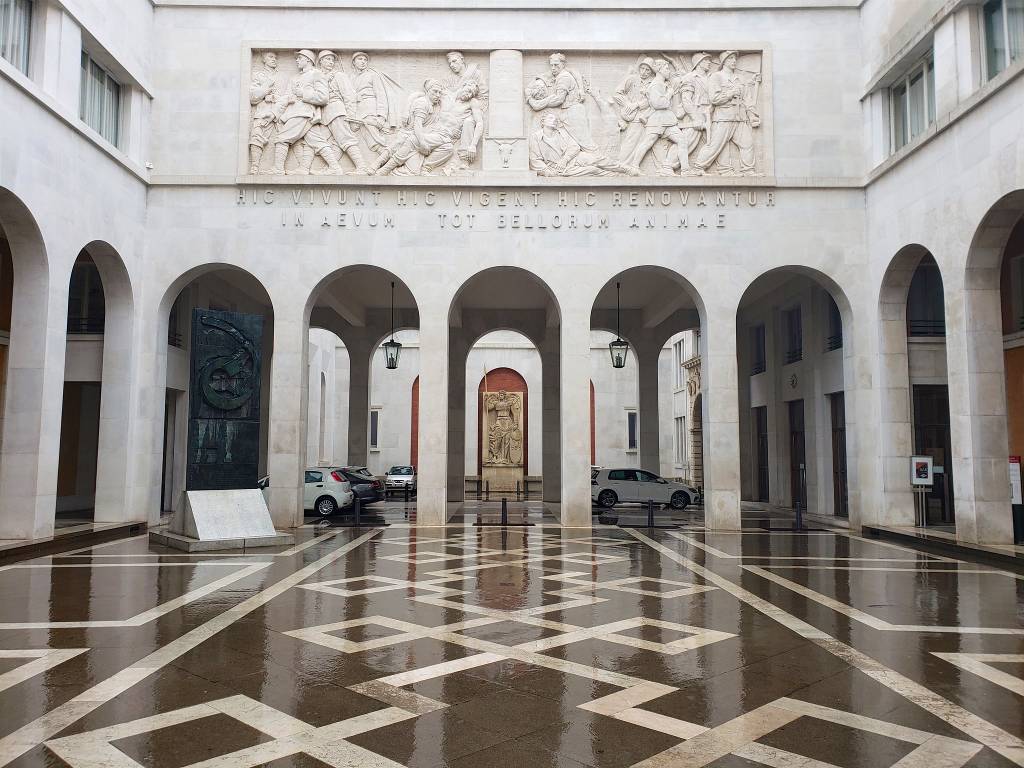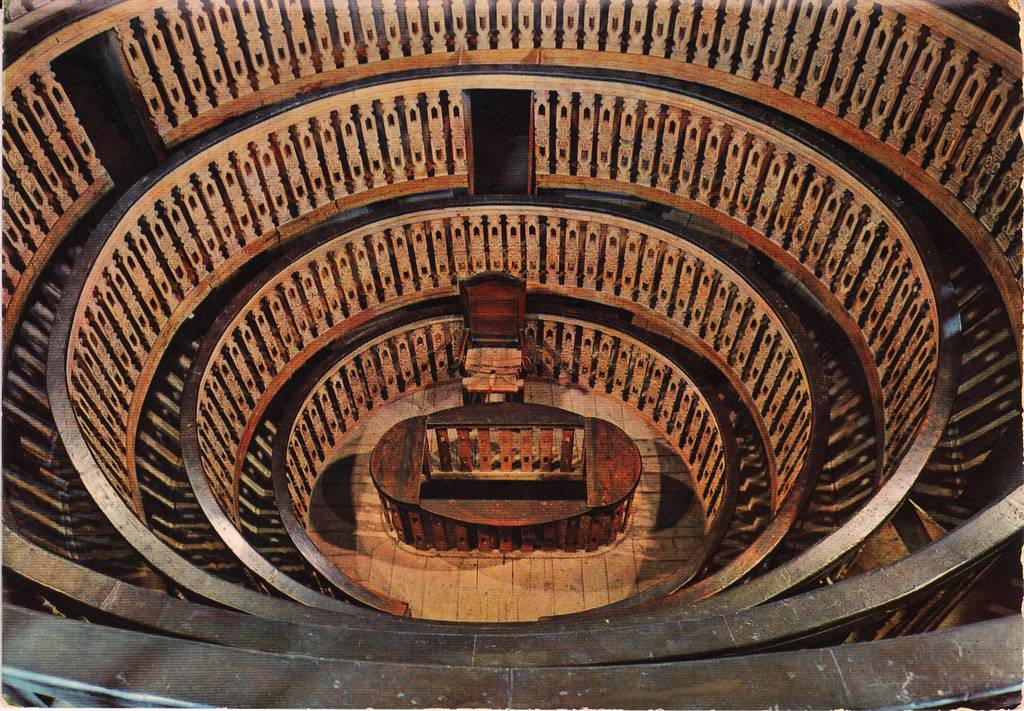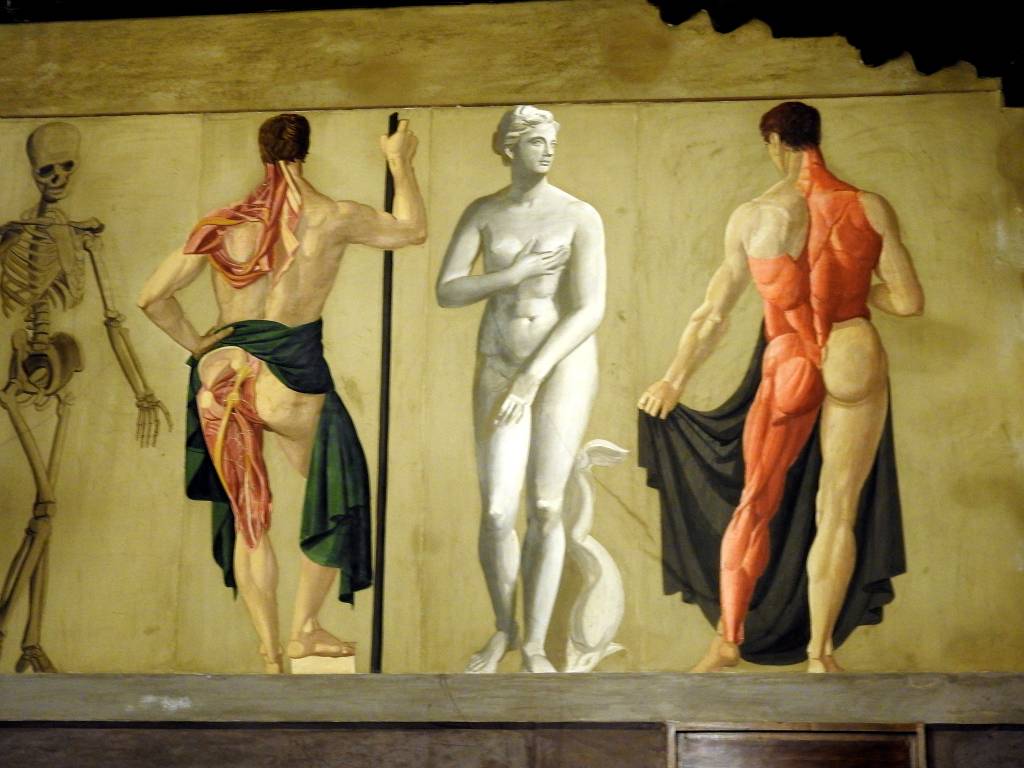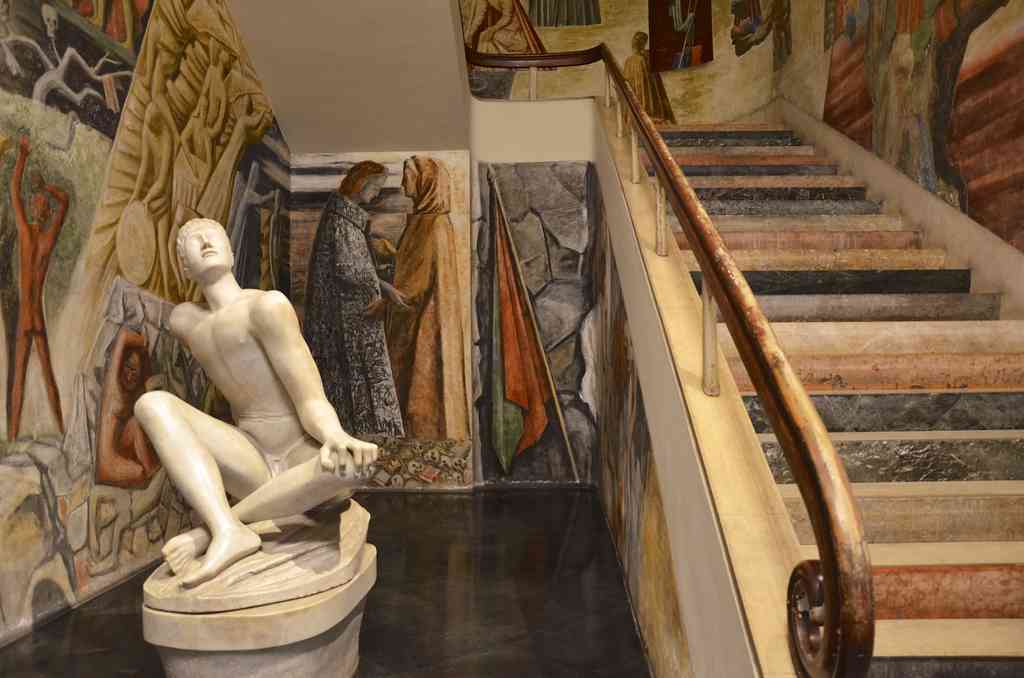Palazzo Bo
The Palazzo del Bo in Padua is a fifteenth-century complex and the historic seat of the University of Padua, one of the oldest universities in the world.

The University of Padua was founded in 1222 by renegade scholars from Bologna seeking freedom of culture and expression. Soon after, it became a hospitable home for scholars and professors from all over Europe. Among them stood out some of Italy’s greatest and most controversial thinkers, such as Copernicus, Galileo, Casanova, and the world’s first woman to receive a Doctor of Philosophy degree, Eleonora Lucrezia Cornaro Piscopia.
But it wasn't until 1539 that this Renaissance palazzo became the official seat of Padua’s history-making university. Up until then, lessons weren’t held in a fixed building. It was up to the professors to find appropriate teaching spaces, which they had to rent or buy themselves using their wages. Located near the street that butcher’s shops traditionally occupied, the palazzo received its name from the emblem of the ox belonging to the hotel previously hosted there, Hospitium Bovis. The University acquired the hotel and some other buildings on the Riviera dei Ponti Romani canal, now underground, and commissioned the Bergamo architect Andrea Moroni to renovate the buildings radically. In 1539 the Palazzo became the principal seat of the University of Padua, which included the ox skull in its official coat of arms.
In the first half of the twentieth century, the Palazzo was again the subject of a significant renovation, on the initiative of the Rector Carlo Anti, who entrusted the renovation and decoration works to the architect Giò Ponti. The structure was expanded with the construction of the New Courtyard. The interior has been enriched with paintings and sculptures by some of the twentieth century’s greatest artists, such as Filippo De Pisis, Giò Pomodoro, and Jannis Kounellis.
Nowadays, the palazzo is a real labyrinth through the old and the new. The main entrance is located in the Via VIII Febbraio 1848, neighbouring the Pedrocchi Caffè and the Municipal Buildings. The building hosts the Rectorate and the Faculty of Law, while the historic classrooms are used for official ceremonies and the granting of degrees to students of the Faculties of Law, Medicine, Humanities, and Sciences.
Ancient courtyard
The main entrance leads to a large courtyard called Cortile Antico (The Ancient Courtyard). The structure resembling a monastic cloister was designed in the sixteenth century by architect Andrea Moroni. Around a square courtyard develops a double loggia of Doric and Ionic columns, dominated by the high medieval tower called Torre dello Studio.
Up to the end of the 17th century, the courtyard was continually decorated with numerous sculptures and bas-reliefs with the coats of arms of those who have contributed to the history of the University, honouring the rectors and illustrious professors, the students, and their families.
The Heroes’ Atrium
A large bronze door leads from the Ancient Courtyard to the Atrium of the Heroes, dedicated to the memory of the fallen students in the Revolution of 1848 and the period of the Resistance to German occupation in the Second World War. For the latter, the University of Padua is the only university in Italy awarded a Gold Medal of Military Valour.
In the atrium, there is also the Scala del Sapere, a staircase of honour leading to the Rectorate, designed by Giò Ponti, who created the pictorial decoration in collaboration with Fulvio Pendini and Giovanni Dandolo. The frescoes represent the birth of humanity and knowledge and the development of the sciences through which the student ascends under the teacher’s guidance. The bright colours of the frescoes and the marble of the steps were chosen to liven up a space with almost no natural light. At the base of the staircase rests a white marble sculpture created by Arturo Martini, the Palinuro. The work takes its name from the teenage helmsman of Aeneas' ship who fell into the sea looking fascinated at the stars.
New courtyard
From the southern side of the Ancient Courtyard, you pass to the New Courtyard, designed by the Veronese architect Ettore Fagiuoli as a connection between the various structures of the complex.
The courtyard was designed in neoclassical style and built in Orsera stone in the years of fascism, as evidenced by the presence of the traditional architectural elements and the effigies of Mussolini.
The east wall frames a large travertine high-relief by Attilio Selva, made in 1939, reflecting the heroic characteristics of fascist nationalism.
A corner of the New Courtyard houses a monument dedicated to Galileo Galilei and made by Giò Pomodoro in bronze and granite. On another wall, there is the sculpture named Resistance and Liberation, created by Jannis Kounellis, which celebrates the Resistance and the liberation of Italy.
The Great Hall
It was initially the dining room of the Grand Hotel del Bo.
The Great Hall or Aula Magna was the University’s School of Law location. Since the mid-nineteenth century, it has been reserved for official ceremonies.
The room is richly decorated with original coats of arms and stuccoes; the ceiling was frescoed by Giulio Carlini in 1854, while in 1942, the hall was rearranged by Giò Ponti, who created the back wall with the seats of the Academic Senate and the adjacent Basilica, a large room full of concrete columns covered with red stucco, which leads to the Bo Novecentesco. The frescoes by Pino Casarini enrich the Basilica, tracing the political history of the University of Padua.
Room of the Forty
From the Great Hall, it is possible to access the Sala dei Quaranta, frescoed by Giacomo Del Forno in 1942 with the portraits of forty famous students from twenty-three different European countries.
The room preserves the ancient teacher's desk of Galileo Galilei, who taught mathematics and physics in Padua from 1592 to 1610. The desk was built to allow Galileo to hold his lessons in the Aula Magna, given the high attendance of Galileo’s lessons.
The Anatomical Theater
The 16th century was of utmost importance for the University: not only the initiative to acquire Palazzo Bo as a principal seat for the University but, in 1545, the world’s first botanical garden was built for academic purposes, and in 1595 the world’s oldest anatomical theatre was officially opened at Palazzo Bo.
This was the first example of a permanent structure created to teach anatomy through the dissection of corpses. An inscription as old as the theatre remains visible:
Hic locus ubi mors east gaudet succurrere vitae
or
This is a place where the dead are pleased to teach those who live
For nearly three centuries, the Anatomy Theater hosted lessons on anatomy and dissections of corpses. The classes were usually held by a professor and two students who acted as assistants. Lectures were often accompanied by live music to make the atmosphere less grim. The father of modern anatomical pathology, Giovanbattista Morgagni, also taught here in this room from 1711 to 1771. The last lesson held here was on the 5th of May 1874.
The theatre structure with a capacity of 300 seats was designed by Gerolamo D'Acquapendente so that every student would have had a good view of the dissection table: an elliptical-shaped room with six levels of balconies that get progressively larger from the base up, made entirely from wood.
In addition to the architectural masterpiece of the anatomical theatre is the Medicine Hall, where there's still a shrine containing the skulls of seven professors who decided to leave their bodies for scientific research.
We welcome all contributions, no matter how small. Even a spelling correction is greatly appreciated.
All submissions are reviewed before being published.
Continue to changelog-

© 'Cortile Nuovo' by Joe Shlabotnik is licensed under CC BY-NC-SA 4.0 Attribution copied to clipboard Failed copying attribution to clipboard -

© 'Palazzo del Bo, théâtre anatomique (1594)' by Annabe2008 is licensed under CC BY-NC-ND 4.0 Attribution copied to clipboard Failed copying attribution to clipboard -

© 'Padova - Palazzo del Bo' by renata testa is licensed under CC BY-NC-SA 4.0 Attribution copied to clipboard Failed copying attribution to clipboard -

We welcome all contributions.
All submissions are reviewed before being published.
We welcome all contributions, no matter how small. Even a spelling correction is greatly appreciated.
All submissions are reviewed before being published.
Continue to changelogWe welcome all contributions, no matter how small. Even a spelling correction is greatly appreciated.
All submissions are reviewed before being published.
Continue to changelogWe welcome all contributions, no matter how small. Even a spelling correction is greatly appreciated.
All submissions are reviewed before being published.
Continue to changelogCategory
Cost
-
70 m
Palazzo Moroni, the usual name for the Municipal Buildings, is a complex of buildings in the city’s heart that house the offices of the Municipality of Padua.
-
95 m
Caffè Pedrocchi, one of the symbols of modern Padua, a café with historical prominence recognized for its coffee and good food
-
One of the oldest churches in the city, also popularly known as the Church of Santa Rita, it is historically a place of faith and meditation.
-
109 m
The Tomb of Antenor is a monumental medieval shrine built to hold the sarcophagus of Antenor, a legendary Trojan prince who founded Padua.
-
144 m
Piazza delle Erbe, one of the two squares that embrace the Palazzo della Ragione, is the temple of the Spritz cult and one of the most popular socializing places in Padua.




